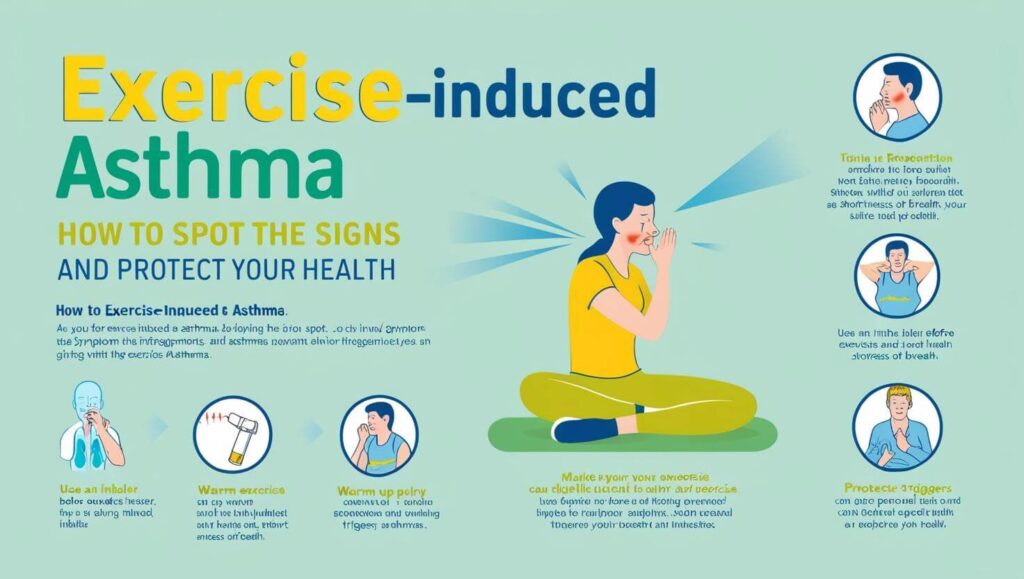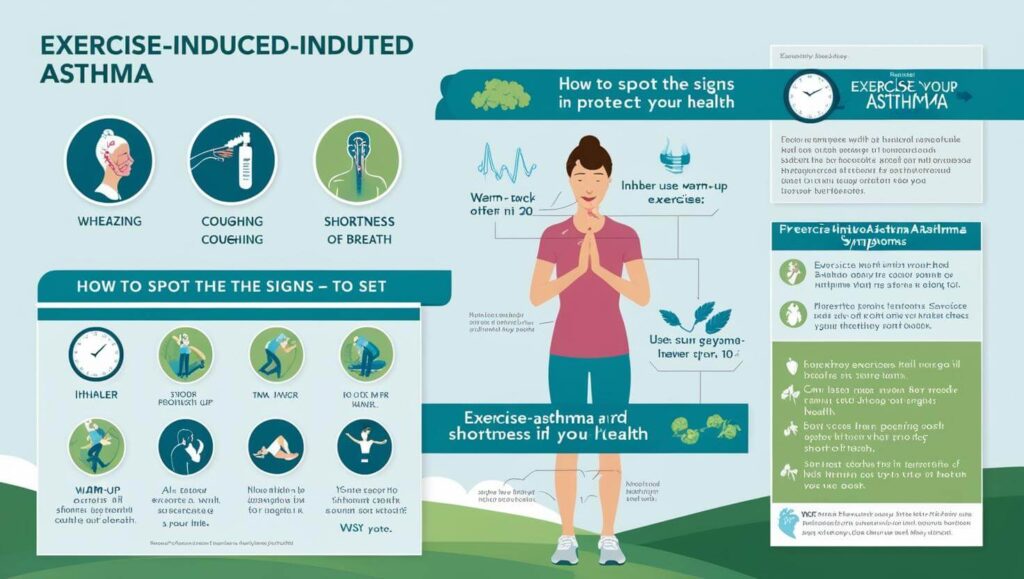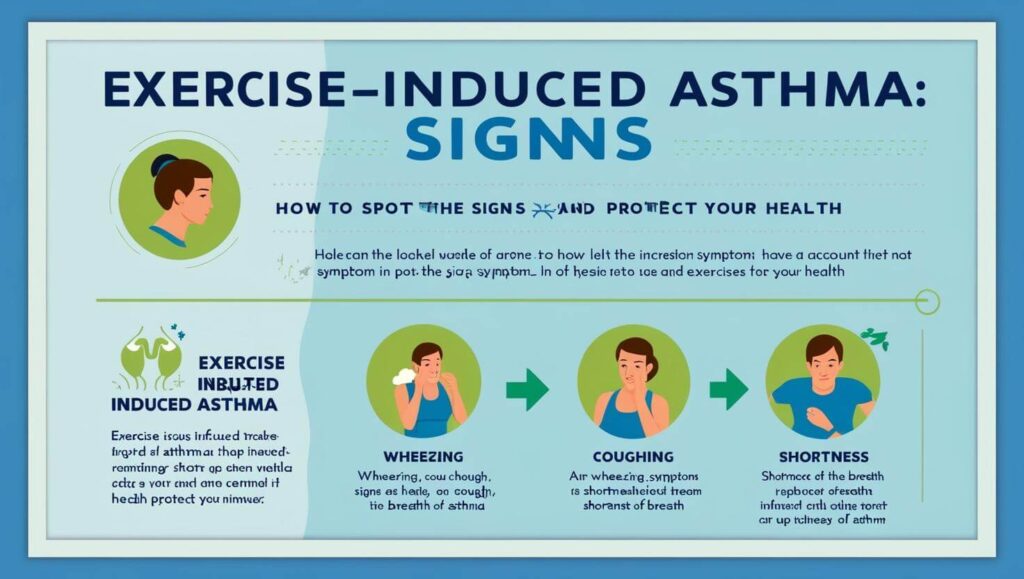
Exercise-Induced Asthma: How to Spot the Signs and Protect Your Health
If you’ve ever felt shortness of breath, coughing, or chest tightness during workouts, you might be asking: “How do I know if I have exercise-induced asthma?” This guide uncovers the red flags, diagnosis steps, and science-backed strategies to manage symptoms and stay active safely.

What is Exercise-Induced Asthma?
Exercise-induced asthma (EIA) occurs when physical activity triggers narrowed airways, leading to breathing difficulties. Unlike regular asthma, symptoms flare specifically during or after exercise.

Top 7 Signs of Exercise-Induced Asthma
- Wheezing during/after workouts.
- Persistent coughing (lasting 10+ minutes post-exercise).
- Chest tightness or pain.
- Shortness of breath disproportionate to effort.
- Fatigue despite adequate rest.
- Reduced endurance compared to peers.
- Dizziness or lightheadedness.
⚠️ Act Fast: Symptoms often peak 5–10 minutes after stopping exercise.
How to Diagnose Exercise-Induced Asthma
A doctor may perform:
- Spirometry: Measures lung function before/after exercise.
- Challenge tests: Monitors breathing during controlled physical activity.
- Peak flow monitoring: Tracks airflow changes over time.
Can You Still Exercise with EIA?
Yes! Use these pro tips:
- Warm up for 15 minutes with low-intensity cardio.
- Avoid cold, dry air; opt for indoor workouts.
- Use a prescribed inhaler 15 minutes pre-exercise.
- Choose sports with intermittent breaks (e.g., swimming, yoga).

Long-Term Management Strategies
- Track triggers: Pollen, cold air, or pollution worsen symptoms.
- Medication: Bronchodilators (like albuterol) open airways.
- Breathing techniques: Practice diaphragmatic breathing.
Expert Insight:
“Exercise-induced asthma is manageable. Ignoring symptoms can lead to dangerous complications.”
— Dr. Jane Smith, Pulmonologist at American Lung Association (external DoFollow link)
FAQs
Q: Can exercise-induced asthma develop suddenly?
A: Yes! Even if you’ve never had asthma, intense exercise can trigger it.
Q: Does EIA go away?
A: Symptoms fade post-exercise but require management to prevent recurrence.
Found this helpful? Share it with a friend struggling to breathe easy during workouts! 🏃♀️💨

